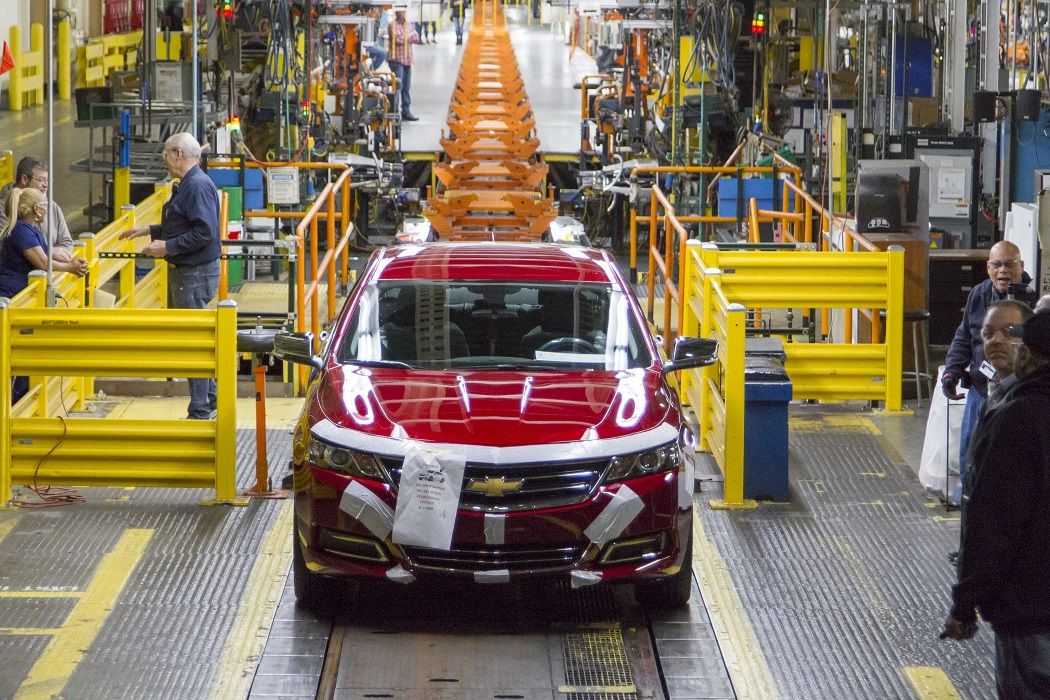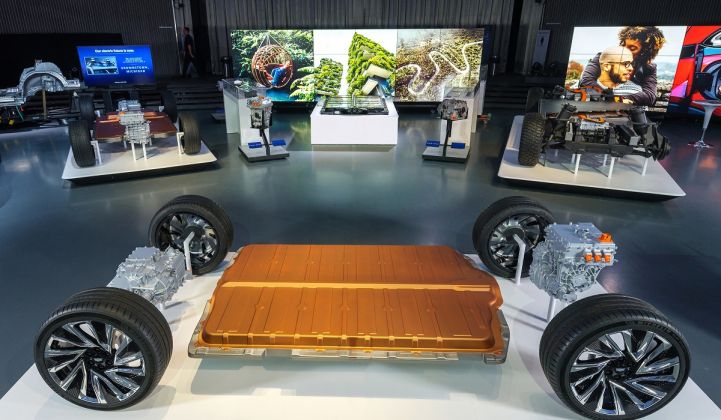WARREN, MI — General Motors wants the world to know that it’s going big on electric vehicles, despite underwhelming sales in the segment to date.
To tell that story, the American automaker brought hundreds of investors, analysts, journalists and policymakers to a showcase event today at GM’s Technical Center Design Dome outside of Detroit.
“We plan to build an entire EV ecosystem that meets and beats our customers’ needs, wants and expectations,” said GM CEO Mary Barra. “We will offer EVs from every brand, every segment, every body style, every price point and in every part of the country."
The automaker displayed 10 new and updated EV models at the event on Wednesday, including the Cadillac Lyriq luxury SUV and the GMC Hummer EV, both of which will be formally revealed to the public this spring. The electric Hummer will be manufactured at GM’s retooled Detroit-Hamtramck assembly plant, which is currently undergoing a $2.2 billion conversion to become GM’s first all-electric assembly facility.
A new version of the Bolt EV, launching in late 2020, was also on display at the event, as well as the 2022 Bolt EUV — the long-rumored crossover version of GM’s all-electric car — which is set to launch in the summer of 2021.
Ultium batteries
At the center of GM’s amped-up EV strategy is a new modular propulsion system architecture powered by the company’s proprietary Ultium batteries. This third-generation platform will support GM’s entire EV lineup going forward, with the flexibility to power a wide range of trucks, SUVs, crossovers, cars and commercial vehicles.
The Lyriq and the electric Hummer are among the first products to use GM’s third-generation EV platform and Ultium batteries.
“This is a huge opportunity for us,” said GM President Mark Reuss of the new EV strategy. “It represents a chance to reinvent the company and reset our brands. It will change this company and people’s perception of it forever.”
GM says the strength of the system starts with the battery cell, which uses state-of-the-art “NMCA” chemistry. These cells cut cobalt content by 70 percent by increasing the use of nickel and adding aluminum.
As part of GM’s broader EV strategy, the company plans to sustainably source as much of its battery materials content as possible from North America, and it will build the cells in collaboration with LG Chem in Lordstown, Ohio. GM first announced its plans to build the $2.3 billion battery plant in late 2019. With the land purchase now complete, the company said the site is on track to break ground in the spring.
“Building cells is critical to electric vehicle manufacturing going forward, and I think it should be taken as a clear sign that GM is all in on batteries,” said Adam Kwiatkowski, director of advanced vehicle design.
“There’s no substitute for the knowledge and experience you gain making your own cells for your own electric vehicles,” he continued. “I think you can imagine the opportunities we have to optimize everything from the chemistry to the manufacturing system to the packs to the vehicles — the whole thing.”

The last Chevy Impala came off the production line at the Detroit-Hamtramck plant last week. The factory is shifting entirely to producing EVs. (Credit: GM)
Ultium batteries use large-format, pouch-style cells that can be stacked vertically or horizontally inside of the battery pack. According to GM, this design allows engineers to optimize battery energy storage and layout for a wide variety of vehicle models. The large pouches also reduce the amount of packaging needed when compared to a cylindrical battery design.
Energy options for the new Ultium system range from 50 to 200 kilowatt-hours, which GM says could enable up to 400 miles of electric range on a full charge. Through its joint venture with LG Chem, the automaker committed to driving battery cell costs below $100 per kilowatt-hour “early in the platform’s lifecycle,” according to Barra.
These technology breakthroughs will help support GM’s aim to sell more than 1 million EV globally by mid-decade. The company has committed to launching 20 new all-electric vehicles by 2023 and plans to spend $20 billion on its electric and autonomous vehicle program through 2025 — although Barra declined to breakdown how much of that spending would be centered on EVs specifically.
GM is no stranger to the EV arena. The company first rolled out the EV1 in 1996 and helped launch the modern EV with the introduction of the Chevy Volt plug-in hybrid in 2011. GM even beat Tesla to market with the first mass-market all-electric vehicle, the Chevy Bolt. But that early lead hasn’t enabled the Detroit automaker win market share.
Chevy Bolt sales remain lackluster and actually saw a 9 percent decline in 2019. Meanwhile, the company recently discontinued producing the Volt as it shifts its focus to pure electric vehicles.
Tesla currently dominates the U.S. EV market, while virtually all other automakers have struggled to break through. As a result, total U.S. EV sales declined by nearly 5 percent in 2019.
Fate of the EV tax credit
Policy hasn’t helped in this regard. The Trump administration’s decision to roll back vehicle efficiency standards has hampered the domestic EV market. Congress also failed to extend the $7,500 federal EV tax credit last year, which is currently designed to phase out once an automaker sells a total of 200,000 EVs. The last-minute decision not to extend the credit delivered a blow to GM and Tesla, which have already hit their EV sales quota.
Senate Minority Leader Charles E. Schumer, D-New York, hopes to include the EV tax credit extension in an amendment to a sweeping Senate energy bill that could come up for a vote at some point this week.
GTM asked Barra if GM is actively working to advance an EV tax credit extension, to which she replied that the company “is having a lot of conversations about a lot of things.” She acknowledged that the extension would be beneficial, but added, “We’re going to move forward regardless.”
With respect to the Trump administration's revision of federal fuel economy rules, Barra said that GM will continue to coordinate with the U.S. Environmental Protection Agency and the National Highway Traffic Safety Administration on the rule change but would remain committed to electrification.
“This is where I think we have a lot in common with California," said Barra. "We want to get to the point where this isn’t a regulatory-driven initiative, this is a customer-driven initiative … and they’ll want to move to electric vehicles.”
The market is watching closely to see if GM’s new strategy can produce the sales the company needs to become a truly competitive player in the EV space.
Credit Suisse’s Dan Levy wrote in an investor note Monday that the push into EVs has been a challenge for all established automakers. Reducing battery pack costs, downsizing engine and transmission plants and balancing budgets have been particularly tough for the legacy players.
“Even though we expect GM to lay out a solid strategy at its EV day, we believe the ultimate proof point of success in GM’s EV strategy is if the volumes materialize and GM is able to challenge Tesla for share in the U.S. EV market,” Levy wrote.




